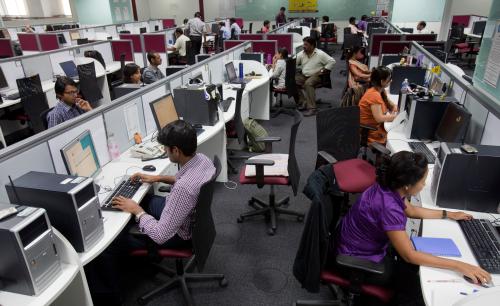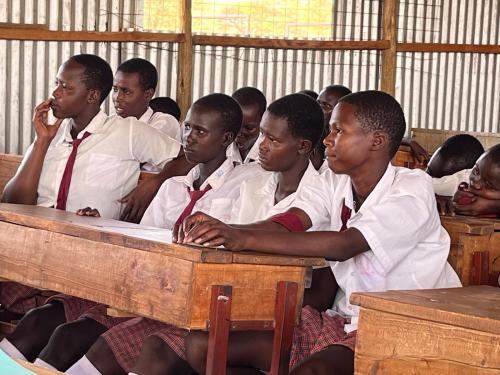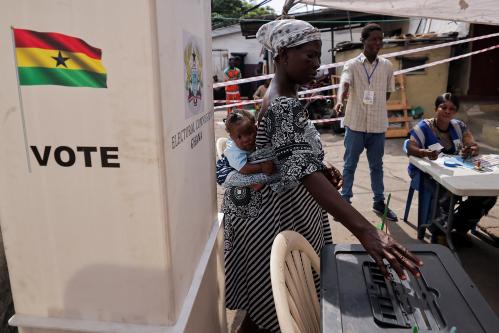Parents’ emotional and financial support for their children is vital to their chances for upward social mobility, but evidence shows that sons receive more support and benefits than daughters, especially in developing regions like Africa. Even empowering mothers does not necessarily benefit sons and daughters equally. In a recent paper, my co-authors and I provide a new narrative for the gender gap in human capital accumulation and intergenerational mobility based on non-pecuniary or psychological biases that parents ascribe to their children’s educational investment.
Intergenerational persistence and mobility is becoming more prominent in the policy and research agendas, but focusing primarily on sons and fathers. Studies have given less attention to mothers and daughter because of data limitations in developing countries and, to a lesser extent, in advanced economies. One exception is our new study that looks at how women’s empowerment affects intergenerational mobility. My co-authors and I used a rich database from Nigeria to develop a model to assess the effect of women bargaining power on gender-based intergenerational occupational persistence across different sectors. We’ve documented four policy-relevant findings.
First, in Nigeria, more women (henceforth “daughters”) have a higher probability to exit the agriculture sector than men (henceforth “sons”) when their parents are in the agriculture sector. Comparing the youngest and the oldest cohort, the proportion of daughters exiting agriculture is about 31 percent, higher than the 17 percent for men (see Panels B and C of Figure 1). We believe this mobility difference is because daughters are receiving less human capital investments from their parents than sons are.
Figure 1: Women have a higher chance to exit agriculture sector in Nigeria

Second, the probability of working in the secondary (manufacturing) and tertiary (service) sectors is much higher for children, both sons and daughters, if their parents were employed in the same sector. However, there is a relatively higher intergenerational persistence between mothers and daughters employment status in the service sector.
Figure 2: Children’s service sector participation in Nigeria conditional on parents’ sector
| Mother | Father | |||
| Daughters | Sons | Daughters | Sons | |
| Agriculture | 12% | 22% | 9% | 9% |
| Manufacturing | 40% | 49% | 18% | 27% |
| Service | 57% | 53% | 33% | 42% |
Note: The table reads as follows:12 percent of daughters whose mothers were engaged in the agriculture sector are engaged in the service sector, against 57 percent of children whose mothers were in the service sector.
Third, having a mother who was a farmer makes it less likely for children to engage in the service sector. This is true for both sons and daughters, but the effect is larger for daughters. Our estimates, after controlling for both observable (including mothers’ empowerment) and unobservable characteristics, show that sons are relatively more able to move toward the service sector than daughters are.
Fourth, a greater intra-household female bargaining power measured by mothers’ education relative to their partners (fathers) positively related to intergenerational mobility. Mothers’ bargaining power—having a mother with more years of schooling than fathers—increases the likelihood of children being employed in the manufacturing and service sector by 1.4 percent and 3 percent, respectively. Interestingly, the effect only holds for sons, especially in the service sector. Increasing women’s empowerment may barely enhance the mobility to the service sector of daughters while that of sons is significantly improved. This result might suggest that, despite parents’ claim that they have the same degree of love for their children, there exists some form of gender bias and sex preferences in families. The fact that sons are more mobile when mothers are empowered may imply that mothers have less confidence in their daughters than their sons hence invest less human capital in their daughters. But, why?
There are three possible explanations for gender inequality in human capital investment:
- Gender biological differences: The idea is that when women devote a lower amount of their time to labor market activities—due to their biological time commitment to childcare during pregnancy, childbirth, breastfeeding, and children’s education—it negatively impacts their returns to education relative to men. This, in turn, lowers parental investment in daughters’ education.
- Gender inequality as a coordination process: Often families play a coordination game caring not only about the income of their daughters but also about the income of their future spouses. It may be optimal for a parent to discriminate when all other families discriminate against their daughters. The explanation follows as such: From the point of view of one parent (in a large population of parents), a daughter may need less education because she is expected to get married with a man who is better educated and can earn more. Therefore, gender discrimination arises as an equilibrium of a process where everyone else discriminates. In that sense, the best strategy for families in a large population of families is to discriminate against their daughters.
- Technological differences: This relates to men and women’s types of labor. Labor market participation hides gender differences in the nature of work. Indeed, men and women’s jobs differ across sectors, occupations, and types of jobs, with gender differences in productivity and earnings across sectors and jobs. Many women have low-productivity jobs, which has a significant cost on their welfare. This difference of treatment in the job may induce non-rational expectation behaviors as the investment in human capital of women would be seen less rewarding.
The model developed in the study provides a new narrative of gender inequality in human capital investment. Gender inequality in human capital investment arises due to differences in parental non-pecuniary or psychological costs (a reflection of their pessimistic view of the world because of intrinsic values placed by the society on gender roles) that negatively affects their marginal benefit of investing in their children’s human capital. In our study, we find that the gender bias most often negatively affects daughters (but there are instances when boys can be discriminated against). We see this play out in society as acts like child marriage, sexual harassment, girls kept from attending school, and, although usually more of a factor for boys, abduction and recruitment of child soldiers.
We argue that differences in parental bias leads to differences in human capital investment threshold of girls and boys. This, in turn, determines the intergenerational mobility threshold for women and men in the economy.
From a policy perspective, parents need to overcome their bias and invest in their children’s human capital equally. Improving women and girls’ lives in a patriarchal social order is impossible without a change in mindsets.
The Brookings Institution is committed to quality, independence, and impact.
We are supported by a diverse array of funders. In line with our values and policies, each Brookings publication represents the sole views of its author(s).








Commentary
How gender determines intergenerational mobility in Africa
November 13, 2018